I don’t know anyone better equipped to assay Unity of Command 2’s last expansion pack than THC’s man in Lithuania. As Martynas Klimas has spent around 220 hours cheek by jowl with 2×2’s hexy masterpiece, his take on this “fitting endnote for the series” is worth its weight in Nazi gold. Over to you, Martynas.
“Currently £5 on Steam, Unity of Command 2 has been out for nearly five years now. In most of the numerous DLCs it has whelped, the USSR has been on the back foot. Their troops, pound for pound worse than Nazi equivalents, would often exist as no more than speed bumps. But in Unity of Command II: Berlin DLC, we’re rehabilitating deep battle, grouping divisions into more capable corps, and crushing the might of the Third Reich in one of the most massive, fastest moving operations of our time. And even the tiny German campaign won’t stop us from reaching our ultimate goal: Berlin.
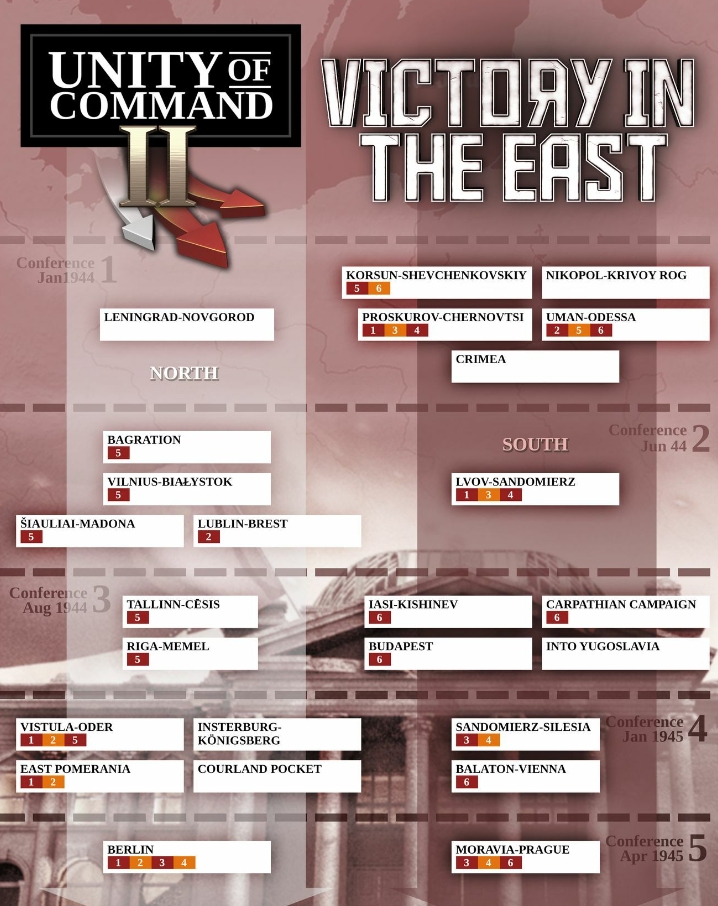
The Victory in the East (Berlin) – the campaign to make the Fuhrer eat a bullet – is 25 missions long. Only Victory in the West is longer. However, Victory in the West also had alternate history paths. What if it hadn’t? That is how the Soviet campaign rolls. This campaign is the single longest, most-sustained experience we’ve had in the DLCs. A fitting endnote for the series.
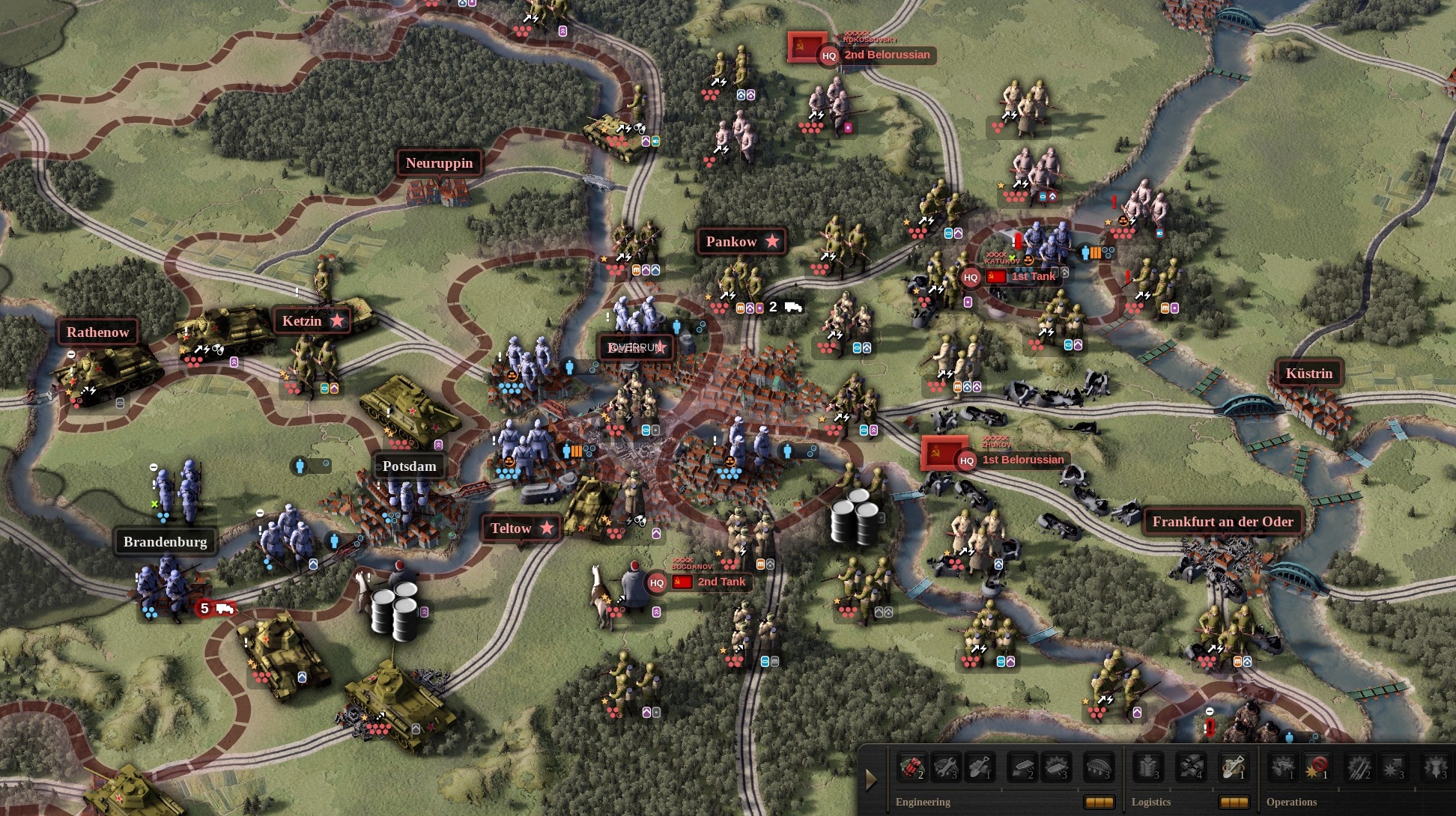
^ 26. Rifle Guard Corps is about to steal Hitler’s stationery
Speaking of endnotes: Berlin DLC also includes Balaton 45, a small German campaign focused on defending Hungary. You have four normal scenarios and three alternate ones, and are expected to take the Reich’s last real tank reserves and send them out to explode somewhere near Budapest. Play this one first. It’s the last time you’ll play something close to typical Unity of Command II scenarios.
An undertaking of epic proportions
Even the choice of HQs in the Soviet campaign is unusual. You get to upgrade and kit out tank armies, 1st to 6th. Notably, you can’t upgrade their command range, only movement. On the field, they are responsible for about three divisions each. Some of you may already have questions.
And the answer is simple: Fronts. All the other army HQs are subsumed by Fronts: 1st Ukrainian, the Baltic Fronts, the Belorussian… And there’s a specific gameplay function here: the tank armies are the avenging sword of communism. Thanks to the blessings of Ford and Kahn, you have concentrated armored forces ready to punch through the brittle Nazi frontlines and maraud in their rear areas. The humble foot infantry, banded into rifle corps, are there to encircle the bypassed zones of resistance and starve the fascist pigs out.
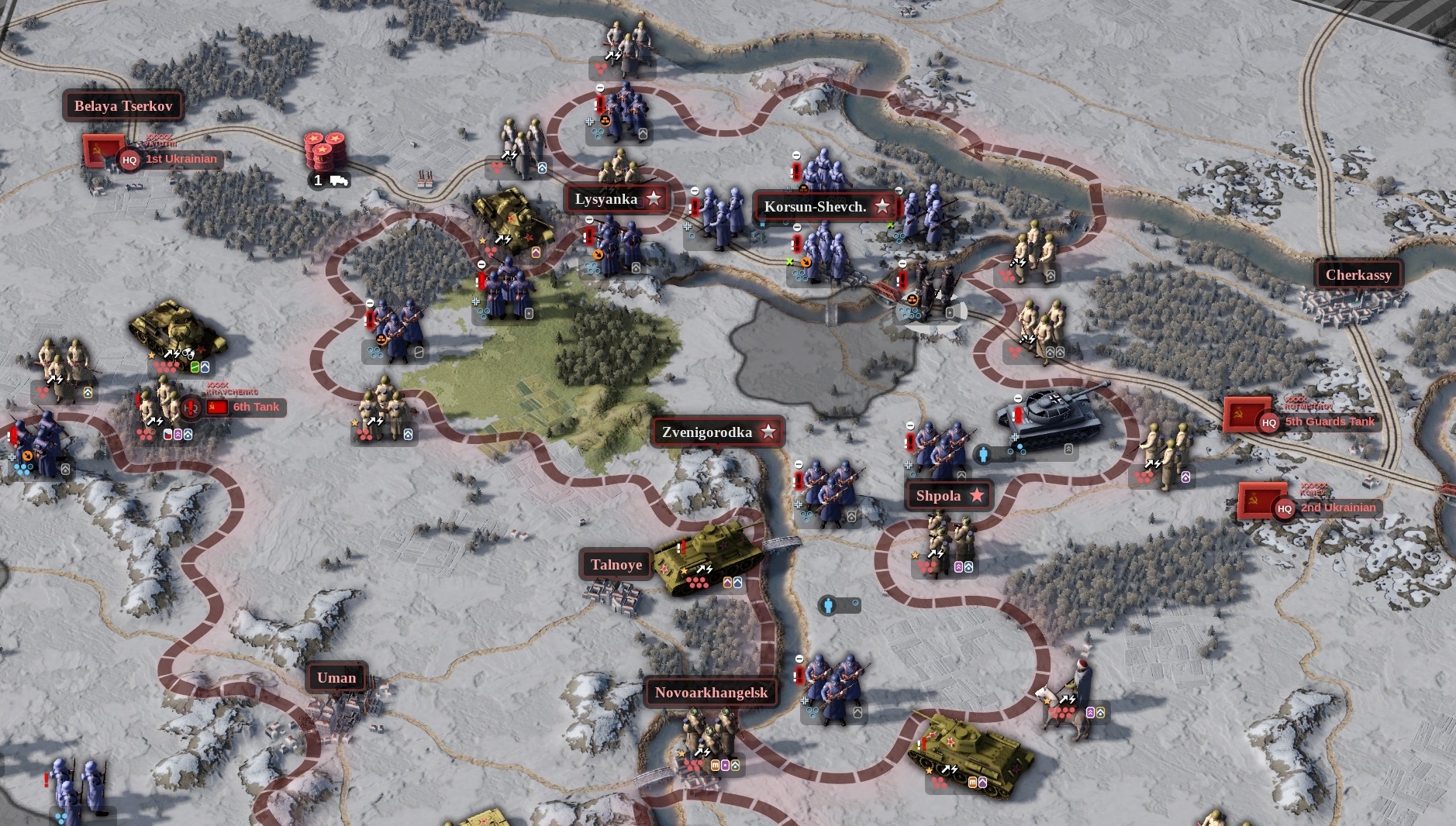
^ They’re down to licking Pervitin wrappers and stale bread crusts.
Granted, the Soviet rifle corps are themselves pretty mean now. Their attack and defense stats have been boosted, and while they only contain five steps, they can have up to three specialists. So they have less staying power on the defense, but well kitted out and used, they can be deadly. A rifle corps with attached engineers, artillery and AT forces can stand against nearly anything. This isn’t 1941 anymore.
At the same time, I wonder if it’s meant to simulate something more. As far as I’m aware, Soviet divisions were smaller than you’d expect, and corps are closer to divisional size. The Soviets also kept formations fighting until they were depleted and only then took them off the line for replenishment. Or maybe there’s some gameplay consideration I’m missing.
Keeping up with the KVs
There are plenty of fortified positions for the foot infantry to overcome. Also, the Fronts are lavishly furnished with abilities, including motorizing infantry for a turn. So your tank armies aren’t necessarily left hanging. A more pressing issue is remembering to keep your short-handed tank army HQs close to their wards.
That’s because 220 hours into the game, I started appreciating rear-guard and counter attack commands. Most of the time, my biggest Command Point expenditures were for attack powers. I didn’t have the time (due to objective time limits) to worry about defensive buffs. But in Berlin I had to keep my armored formations safe from their Nazi counterparts. Running away from the fight is very effective if it protects your troops and leaves the enemy stuck in place.
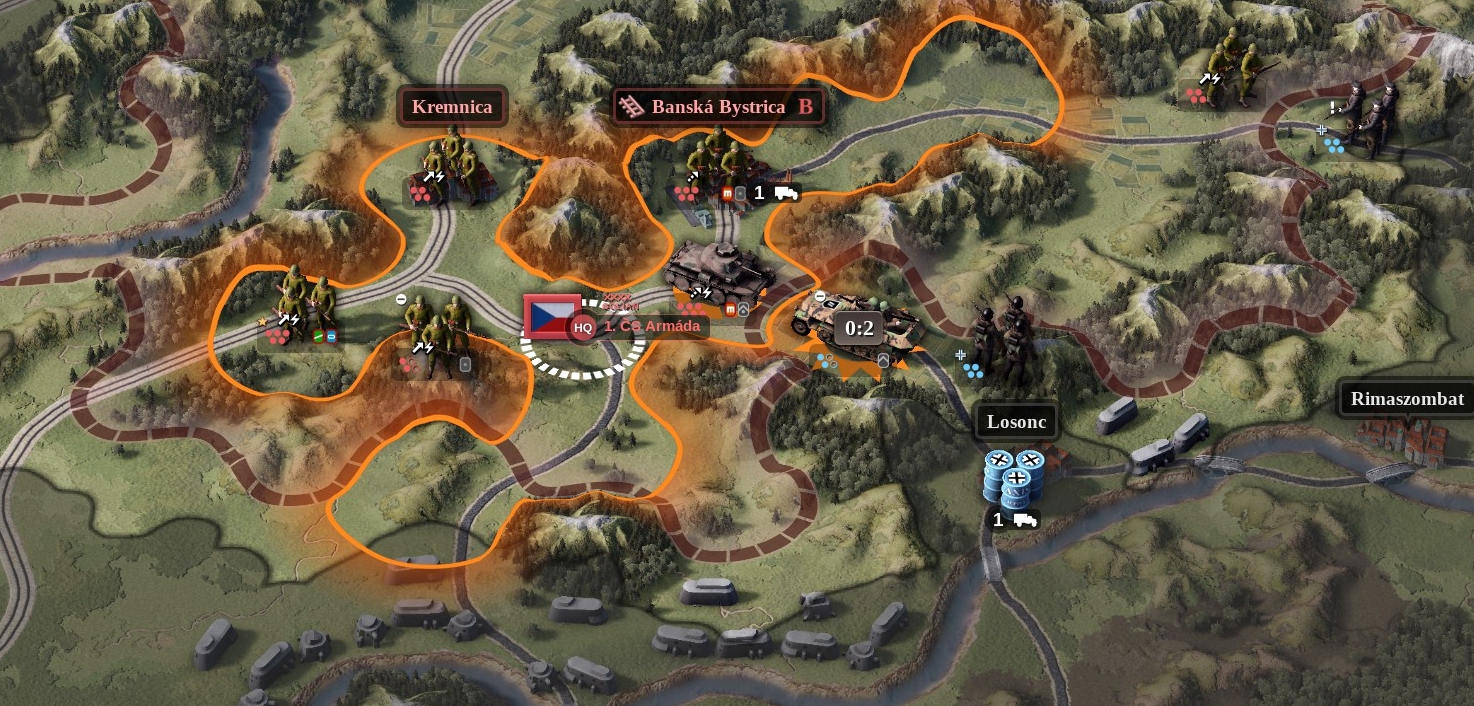
^ Even in 1944, a Panzer 38(t) is better than no tank.
Actually, in the second half of the campaign, I would sometimes end turns with surplus command points and even air strikes.
Talking of which, the AI hasn’t really gotten better at using these resources. While it is still very good at striking at your supply lines, their attacks are still predicated on losing a division or two. Worse, it only ever uses air attacks at the end of the turn, not to soften a position before the attack.
I think the AI was also tripped up by a combination of map size and having excess command points (due to not having units that could use them offensively). More than ever before, the AI was trigger-happy when it came to blowing up bridges. And while a lot of the large scenarios had intricate supply lines that weren’t easy to cut, I’m certain I took Budapest on time because the AI had accidentally starved the salient.
Troubling scenario scenarios
The game itself struggles with the large maps. Carpathians is the biggest offender, not only due to sheer size, but also because your forces are arrayed on three of the four edges of the map. This also means AI units on three of the four edges. As the AI is more than happy to move a unit in the South before hopping North, then South again, then East – I posted a clip of that in action on social media – motion sickness is the defining feature of the Carpathian campaign.
Another singular feature of the Carpathian scenario? The way the campaign, despite having no alternate tracks, integrates alternate history outcomes. We all know lettered optional objectives in Unity of Command 2: they either give you better starting positions in later scenarios or allow you take alternate tracks. But in the Carpathians, it gives you the option of saving the Slovak uprising. If they survive, they become a thorn in the enemy side in the Czechoslovak campaign.
But when time comes for the third fight in this area, the Uprising’s capital of Banska Bystrica is suddenly in German hands. Why? In fact, it’s one of the issues that I noticed while marathoning the Berlin DLC to get the review in front of your eyes sooner: you’ll see cities you previously conquered appear on the map in enemy hands time and time again. While I understand why this might have been done, I still found it frustrating.
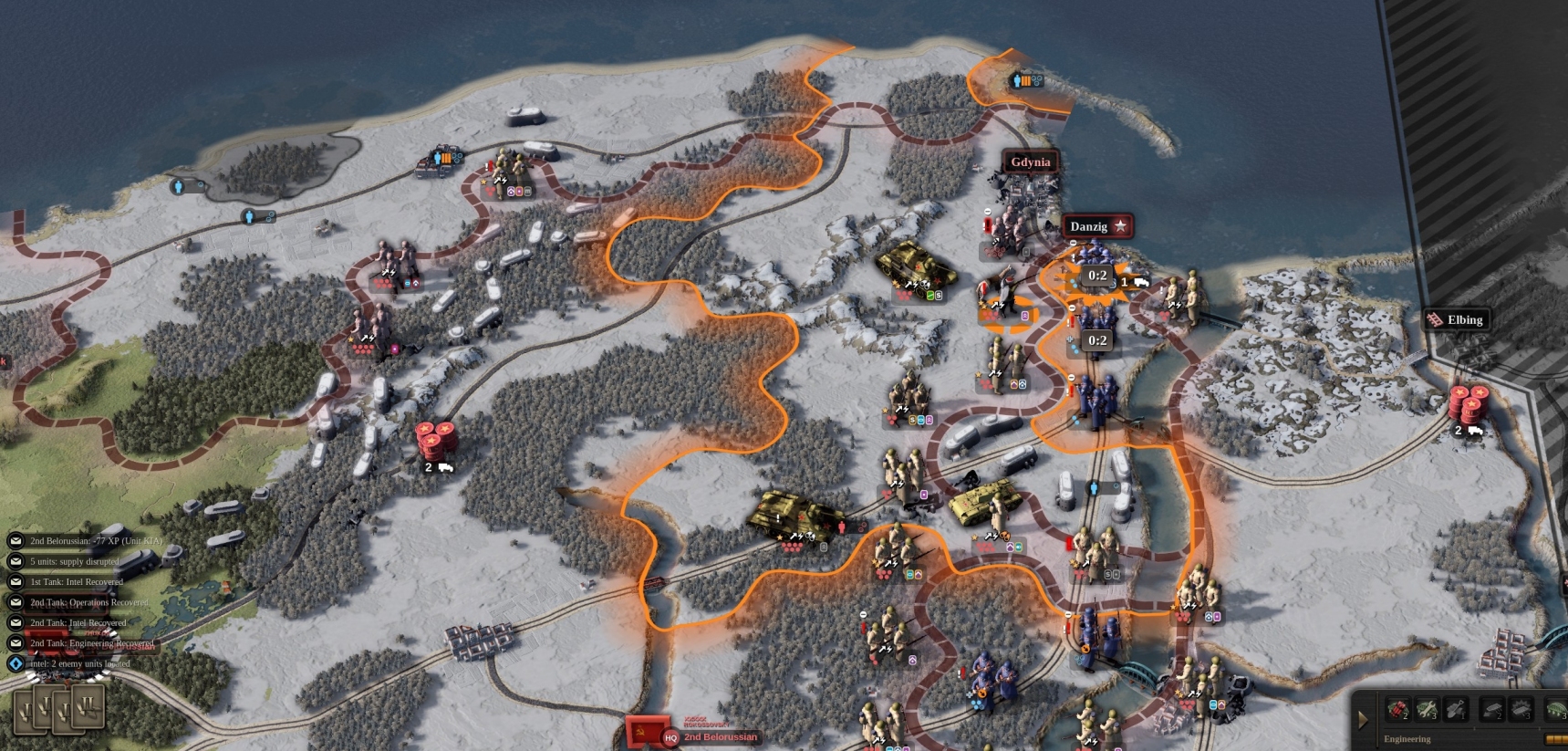
^ Securing the strategic reserves of “Mother!”
I confess I also found myself employing ‘gamier’ tactics than I’ve used in the past. The easiest trick in the book is, at the end of a scenario, to strip steps and specialists off units that won’t be carried over. It’s wise to do this in the Berlin DLC, since you have many carry-over units and little in the way of reserves to replace casualties. Because even starving units furnish XP when vanquished, crushing them is a good way to train up your rifle corps and inexperienced armor formations in relative safety.
And if you objective grab efficiently, you’ll have plenty of prestige to splash on reinforcements. After all, you can’t upgrade Fronts, they’re out of your control. Meanwhile, your tank armies don’t benefit from assault river crossings, set-piece attacks, temporary motorization or free straggler roundup (if you have tank army stragglers, you’ve already failed). This frees up funds for both cards and reinforcements.
Specificity is the core of a good joke
If you’re better than me at husbanding your troops, the Berlin DLC offers monstrously expensive specialist steps, like ISU-152s for 130. These can boost infantry formations tremendously. With mobile artillery, you can launch suppressive fire (read: artillery bombardments) and set-piece attacks after moving. What’s even cuter is that the Czechoslovakians, Romanians, etc.. get their own specialized upgrades. Is TACAM the acronym for some new US army program that will get cancelled after spending $50 billion? No, it’s the Romanian tank destroyer that marries the LT vz.35 hull with the ZiS-3 gun. Hilarious!
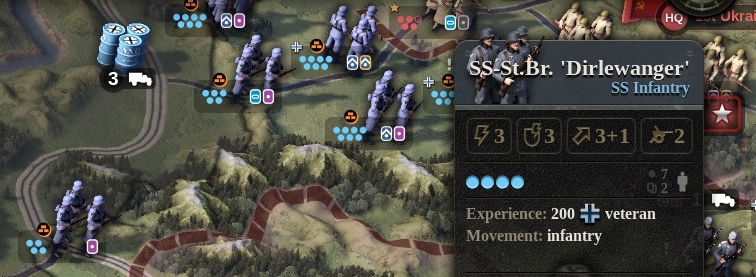
^ Wait a minute, I recognize that unit name…
The specificity doesn’t end here. While the Soviet units have utilitarian titles as a result of an early Bolshevik decision to not build up divisional legends, the Nazi units sport increasingly weirder and specific names. It’s the result of having to provide many small, awful units for you to crush. We’re talking about deep nerd shit like Sperrgruppe Wiedling, which I can’t really find information about, and Div. z.b.v. 300, which taught me about the concept of troopless special purpose commands – in this case, it was tasked with leading Estonian SS volunteer border guards in the Courland pocket.
So, in conclusion, the Berlin DLC isn’t without its flaws, but it’s still both a monumental and enjoyable experience. Granted, I wish I’d had time to play it in a more relaxed manner… but perhaps my haste was dramatically fitting. After all, Bagration wasn’t exactly a chill, laid-back operation.”

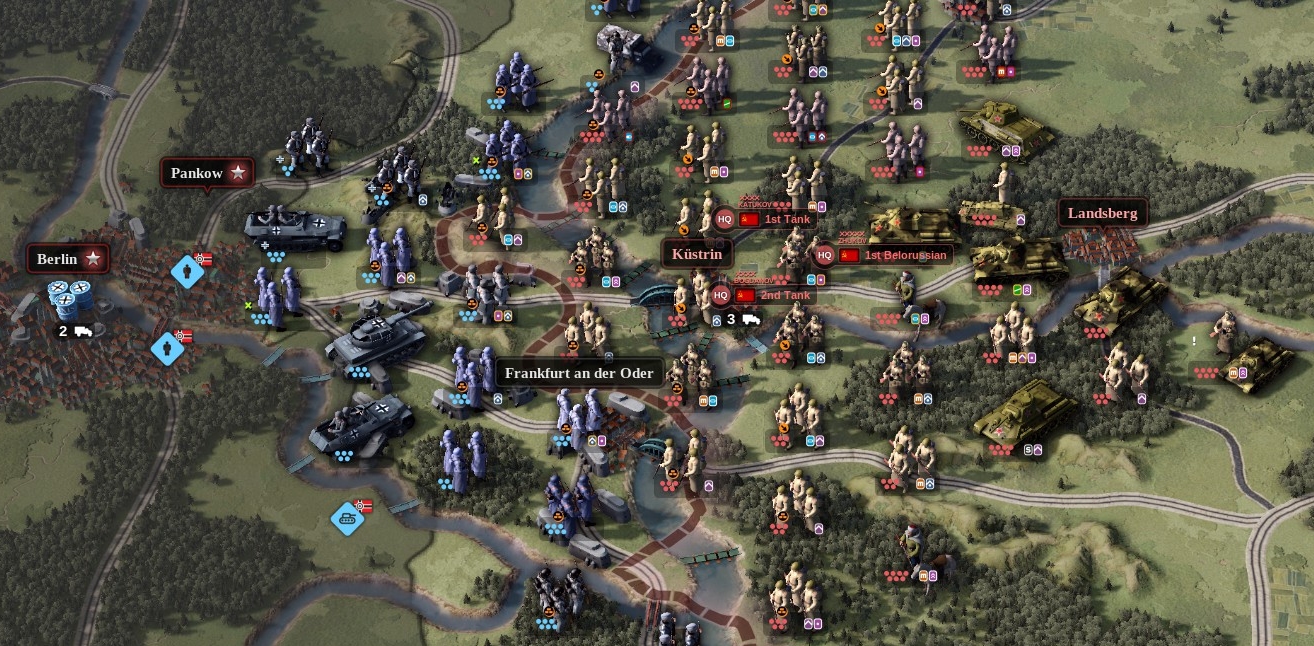
I tried to enjoy Unity of Command 2, it’s right at my sweet spot for complexity and tactics, but i hate carry over with a passion ever since Shadow of the Hornet Rat on my old PC.
‘Winning’ a mission in a non optimal way means you are fundamentally screwed 3 missions later, but you don’t actually realise it.
I had the same issue with Ultimate General: Civil War, which i enjoyed my first mission, scraping through the map, only to realise i was already screwed and didn’t want to play the 2nd one and gave up.